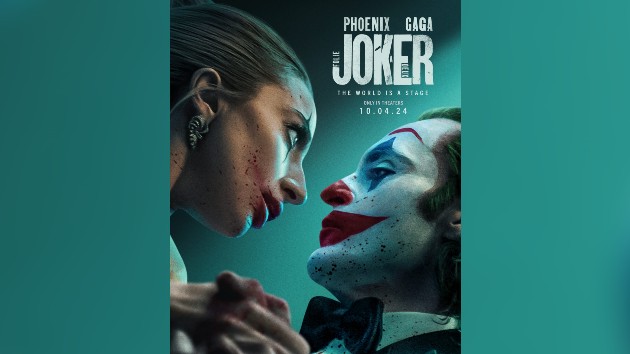Frustrating. That’s the best way to describe the feeling after watching “Joker: Folie à Deux.” Within the sequel lies so much potential, because nearly every scene creates a plethora of opportunities. However, in each instance, the film seems to be holding back.
The movie lacks the raw intensity of the original “Joker,” which lit up cinemas like a cultural lightning bolt five years ago. Instead, this sequel meanders and stutters. Nearly every time tension builds and we expect bombastic acting, it fizzles. The punchiness and grit are diminished. Just like Arthur Fleck, played by Joaquin Phoenix, the movie is tired and wistful.
Expecting the same success as the first film is unrealistic. Director Todd Phillips’ dark reimagining of the Joker drew from “Taxi Driver” and “The King of Comedy.” Those films were released over 40 years ago. Predicting his vision would be successful was not out of the question, but reaching the billion-dollar milestone was surprising. It became the highest-grossing R-rated film ever until “Deadpool & Wolverine” took the title this past summer. “Joker” earned 11 Oscar nominations and won two. So, we can’t walk into the theater expecting the same magic.
“Joker: Folie à Deux” continues the story in its own voice, bolstered by a $200 million budget that dwarfs that of the original. Rather than embodying the sharp, focused storytelling of the original, the sequel presents a more disjointed narrative. The story is dotted with random bits that are entertaining, but distracting. Phillips could be forgiven for this, if he intended the parts to reflect the mind of Arthur. But were those choices purposeful? I think they were, but the execution seems restrained. It’s most evident in the musical scenes.
Honestly, the musical scenes are fine, but they are just not as powerful as they should be. Time and again, we are reminded that this is his mind flying into fantasy. If that is the case, please for the love of God, go all out and own it. Phillips’ choice in adding such a jarring theme to this franchise should shake the rafters and make everyone reel, whether they love them or hate them. Unfortunately, most of the numbers are middling and mild.

It’s not surprising though. I think Phillips struggled with his decision. The director has long been loath to call his movie a musical. In fact, in an August interview in Variety, he said the movie’s musical numbers are just Arthur’s dialogue that the character has trouble articulating. He doesn’t have the words to say what he wants, so he sings. Phillips doesn’t want to pigeonhole his movie into the musical genre and pushes away the insinuation. Sounds like he’s trying hard not to embrace his film’s strengths, which likely telegraphed into his directing decisions, and subsequently the acting, editing and more.
Much of the movie takes place in Arkham Hospital, where Arthur awaits trial for five murders from the first film. The highest-profile murder is the on-air death of Murray, played by Robert De Niro. The rest of the film centers around the trial and is in the courtroom, where Phillips gives us more characters to enjoy, like Arthur’s defense attorney, Maryanne Stewart, played by Catherine Keener, and Gotham district attorney Harvey Dent, played by Harry Lawtey. But again, it seems the film is not embracing what it is. What should be a gripping courtroom drama lacks tension and struggles with pacing.
It’s at the hospital that we meet Jackie Sullivan, played by Brendan Gleeson. Gleeson is always one of my favorite character actors. He shines in his role as the guard Jackie who puts Arthur in a music therapy due to good behavior, despite his violent past. It’s here that sparks fly when Arthur meets fellow inmate Lee Quinzel, played by Lady Gaga.
Cinematography enthusiasts will appreciate the long-take sequences and set designs. The movie captures the oppressive atmosphere of Arkham and the bleakness of the surrounding city. Phoenix’s physical transformation is striking; he appears more gaunt and haunted than before. His looks as the Joker and Arthur, along with Lady Gaga’s transformation, are some of the best aspects of the film.
Their “relationship” unfolds through song and dance, which should be the films’ highlights. However, these sequences do not hold up, like the original movie’s tension filled scenes. Phoenix previously proved his vocal prowess in “Walk the Line,” but not here.
It’s an issue for me. I doubt Arthur would have been a perfect singer. He would have been raspy, flat and off key in reality. He smokes like a chimney, and screams and laughs uncontrollably… not the best vocal regime.
But this is supposed to be his fantasy right? Who’s a bad singer in their own mind? It’s another example of this film not swinging for the fences. The singing is subdued, and dancing is subdued. It’s all reticent. His co-star Lady Gaga is obviously a renowned singer in her own right, and offers a strong portrayal of the cunning Quinzel. Even her performance left me wanting more.
The comparison between the first film and the sequel is unfair. This movie is not as good—the pace is less engaging, there is less tension, and it feels disjointed. It all ends in a whimper with a final scene that leaves the audience scratching their heads. That doesn’t mean it’s not enjoyable. It’s interesting and different. Phillips had a vision. While the musical scenes aren’t perfect, they were fine. It’s a watchable 4/10.


